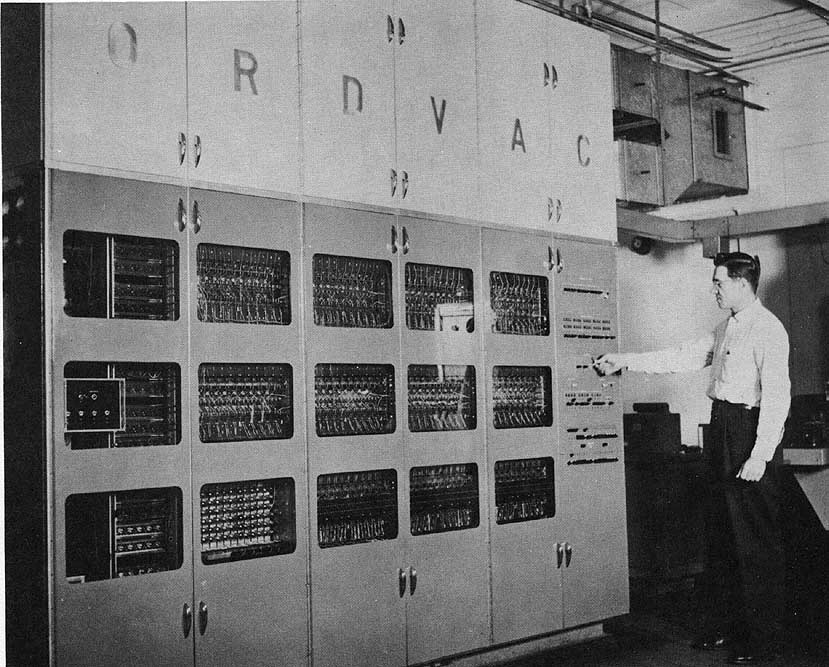 |
| Louis Ridenour |
Computing at the University of Illinois began in 1949, when the research board under Graduate College Dean Louis Ridenour sent a proposal to University President George Stoddard recommending that the university construct a copy of the von Newmann machine. A contract was given to the university by the Ballistic Research Laboratory at Aberdeen Proving Ground in Maryland that called for a machine to be built called the ORDVAC. Ralph Meager was chosen as chief engineer, and work was undertaken in 1950 and 1951.
 Part of the deal with the Army was that two of every part required for ORDVAC had been purchased or built; by November 1952, it was possible to construct a duplicate computer called ILLIAC. Hence, the University of Illinois could rightfully claim the distinction of being the first mass producer of computers (two in one year). Both computers proved to be successful. Part of the major success was the reliability that was engineered into the machines by Ralph Meagher and his development team. ILLIAC I was used campus wide, and its success spread the computer philosophy to other campuses.
Part of the deal with the Army was that two of every part required for ORDVAC had been purchased or built; by November 1952, it was possible to construct a duplicate computer called ILLIAC. Hence, the University of Illinois could rightfully claim the distinction of being the first mass producer of computers (two in one year). Both computers proved to be successful. Part of the major success was the reliability that was engineered into the machines by Ralph Meagher and his development team. ILLIAC I was used campus wide, and its success spread the computer philosophy to other campuses. ILLIAC I was used by Lajaren Hiller, director of the Experimental Music Studio, to compose and play the Illiac Suite, the first computer-composed composition. In 1966, at the Fall Joint Computer Conference, Heinz Von Foerster organized a highly creative session on computers in music. The papers presented in this pioneering session were later published in the book Music by Computers, edited by Von Foerster and James Beauchamp.
ILLIAC TIMELINE
RELATED LINKS
- Ralph Meagher
- ILLIAC Series

